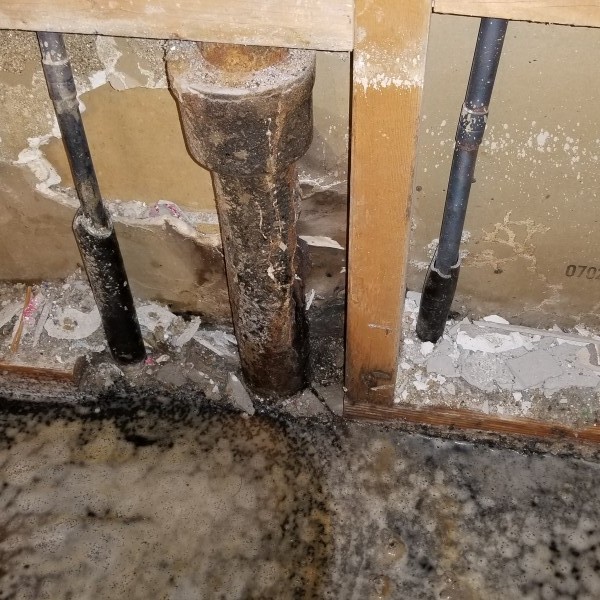How do you really feel about How to Fix a Water Damage Bathroom?

The restroom is incredibly susceptible for moist accumulation and potential water damages as a result of the constant use water in it. This write-up uses basic assessment methods to assist spotting water damages threats.
The constant use water in the restroom makes it incredibly vulnerable for moist buildup and also prospective water damage. By inspecting it regularly, you can lower water associated damages.
The following collection of assessments is easy to execute and also must be done once in every three months in order to maintain your shower room in good shape and also to prevent possible water damages caused by the bath tub, the shower, pipe joints and also plumbing, sinks, cupboards, and also the bathroom
Do not neglect doing these evaluations and also be thorough while executing them. Keep in mind that these straightforward evaluations can conserve you a lot of cash by offering very early indicators for water damages
Sinks and Cabinets
Sinks and also cabinets are revealed to moisture as well as humidity everyday and also are typically forgotten. Examine consistently under the sink and on the kitchen counter above it. Repair any kind of drip in the trap as it might recommend drainpipe issues. Look around the sink, sluggish draining pipes may show a blocked drainpipe. Replace sink seals if they are fractured or loose.
Bath tub and Shower
The shower and also bathtub need unique attention as well as maintenance. Inspect the floor tiles and replace if split. Make sure that there is no missing cement in between the tiles. Examine and also change cracked caulking at joints where the walls satisfy the flooring or the bath tub. Clogged drains as well as pipelines troubles will stop the tub from drying out and also might indicate major troubles beneath the tub. Talk to a professional right away to stop structural damage. Focus on stainings or soft areas around the tub wall surfaces as they might indicate an internal leak.
Plumbing
Signs for water damages are tough to detect because a lot of pipelines are mounted inside the walls.
Pay special interest to floor covering and also wall surfaces moisture and spots as they might show an invisible plumbing problem. Check wetness degrees in adjacent areas too.
The Toilet
The bathroom is a vulnerable water joint. Examine the water lines and also look for leaks around the bathroom seat, in the hose pipe, and under the water tank. If you spot any type of signs of moisture on the floor around the toilet, check for leakages in the toilet edge and also container seals.
Know that hanging bathroom bowl deodorants enhances the chances for clogs.
How to Prevent Water Damage in Your Bathroom?
Water damage repair is an expensive, meticulous, and lengthy process. Unfortunately, bathrooms are the most susceptible rooms to water damage due to toilets, showers, and sinks. Pipes and fixtures wear out over time and are not immune to damage. But all is not lost, as there are ways to prevent water damage from occurring in your bathroom.
Check Your Plumbing
Nothing lasts forever, especially pipes, which can rust and begin leaking over time. You should periodically conduct pipe inspections and pay attention for any musty smells or water stains that may indicate you need water damage repair. Here are some things to check:
- Frequently test valves for your toilet, shower, and sink to ensure they are properly working.
- Check faucet supply lines hidden under vanities and replace when needed.
- Replace cracked or deteriorating caulking along sinks, tubs, and showers.
- If you notice a clog in your sink, call in a professional.
- Since you can’t check the pipes in the wall, keep an eye out for stains, drywall bubbling, musty smells, and excess moisture; if the bathroom is on a second level, check the ceiling of the room directly below for these signs.
Don’t Overwork Your Toilet
One of the most common reasons bathrooms need water damage repair is due to overflowing toilets. Save yourself the hassle of cleanup by being mindful and not pushing your toilet to extreme limits. If you have young children, it is especially important to keep an eye on them when they are in the bathroom and to teach them how to avoid clogging the toilet. Here are some more tips to help prevent your toilet from overflowing:
- If you have a septic tank, only use septic-safe toilet paper
- Do not flush anything down the toilet besides toilet paper; items like diapers and sanitary napkins will clog the piping
- Pay attention to your toilet’s water level: If it’s low, it could mean it is partially clogged or that there is a crack in the toilet bowl
Maintain Your Shower/Tub
- Replace showers or tubs with cracks or other damage; even hairline cracks can allow water to seep in and cause damage.
- Grout and caulk help prevent water from seeping into walls and floors, so repair them if they are chipped, cracked, or deteriorating.
- Replace torn shower curtains or shower doors with seals that no longer work.
- Dry the floor and drain water from the tub immediately after use to prevent damage from sitting water.
https://www.alure.com/home-improvements-blog/resources/how-to-prevent-water-damage-in-your-bathroom

As a fervent reader about How to Prevent Bathroom Water Damage, I thought sharing that piece of content was important. Sharing is caring. One never knows, you will be helping someone out. Thanks a lot for your time. Don't hesitate to stop by our website back soon.
Schedule A Service
Comments on “Exactly how to Prevent a Water Damaged Bathroom”